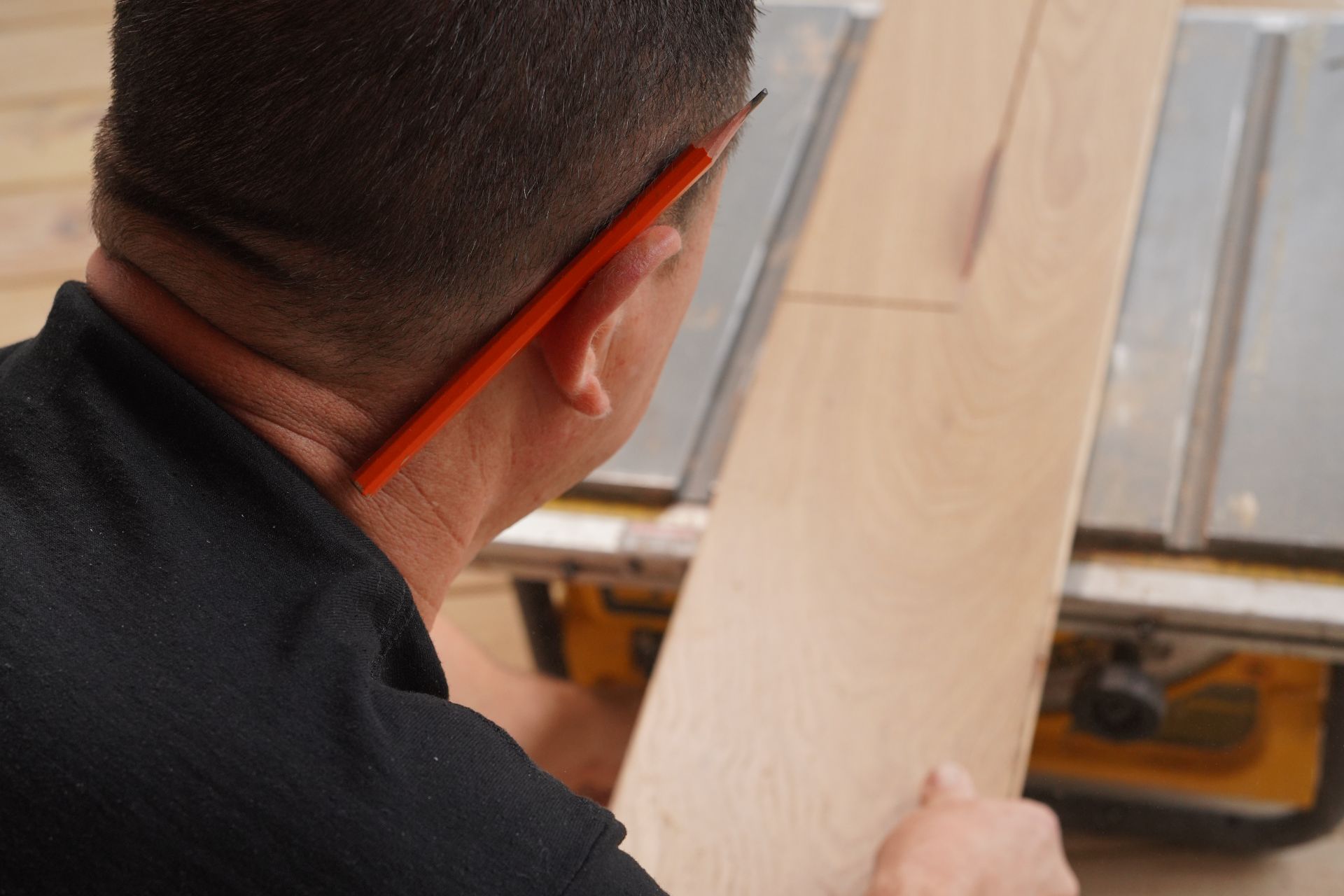BECOMING A HARDWOOD FLOOR INSTALLER
ARE YOU A FUTURE HARDWOOD CRAFTSMAN?
Learn what it takes to become a hardwood installation craftsman and find out if this career is the right fit for you. If it is, we’re here to help you get started.
skills needed to become a hardwood flooring installer
There are a few basic skills needed to become a successful hardwood flooring installer. These skills will help you achieve a career that is long-lasting and reliable.
Basic Math & Measuring
Basic math and measuring skills are ideal for any hardwood flooring installer. That’s because you’ll need to measure, cut, and lay out hardwood floors and flooring materials prior to installing hardwood flooring.
physical strength
While installing hardwood flooring isn’t all about physical strength, it is a good characteristic to have. Physical strength will help you use power tools like a floor nailer, help you remove old floors, and give you the strength needed to complete physical labor during the work day.
physical strength
While installing hardwood flooring isn’t all about physical strength, it is a good characteristic to have. Physical strength will help you use power tools like a floor nailer, help you remove old floors, and give you the strength needed to complete physical labor during the work day.
creativity & craftsmanship
When installing hardwood flooring, being creative will help you work around difficult areas, lay out the flooring and materials in the way that looks best, and install with attention-to-detail.
customer service
To work with clients and customers in their homes, having good customer service skills is a must. Since you’ll be working inside someone’s home and planning projects around their schedules, being able to communicate effectively and solve problems when they arise is crucial.
customer service
To work with clients and customers in their homes, having good customer service skills is a must. Since you’ll be working inside someone’s home and planning projects around their schedules, being able to communicate effectively and solve problems when they arise is crucial.
get started with skilled hardwood installer
training programs
Check out our hardwood installer training programs by viewing our hardwood training programs.
two primary types of hardwood floor installation
There are two primary types of hardwood flooring installation: prefinished flooring installation, and sand and finish hardwood floor installation.
prefinished flooring
Prefinished hardwood floors are either engineered or solid wood flooring. The unique thing about prefinished flooring is that it is already stained, sealed, and finished prior to being installed. For hardwood flooring installers, prefinished hardwood flooring requires installation, rather than installation and finishing on-site.
engineered flooring
Engineered flooring is hardwood flooring that is created by using a combination of wood layers. The topmost layer is a thin piece of genuine wood while the layers underneath are usually made of wood composites.
solid wood flooring
Solid hardwood floors are made from one solid piece of wood, as its name suggests. Solid wood is available in a wide range of species, such as pine, oak, maple, cherry, and more.

sand and finished floor
Sand and finished floor requires a different installation technique than that of prefinished wood floors, because it is not stained or sealed prior to installation. In this type of wood flooring installation, the installer will need to install the unfinished flooring, then stain, seal, and finish the floors on-site after the floors are laid.

find your path: how to become a hardwood installer
The path to becoming a hardwood installer requires some hands-on training in wood flooring installation and sanding and finishing floors. The National Wood Flooring Association (NWFA) offers five unique hardwood courses: Basic Wood Flooring Installation, Basic Sand & Finish, Basic Install & Sand/Finish Combo, Intermediate Installation, and Intermediate Sand and Finish.
In the basic and intermediate wood flooring installation courses, you’ll learn about the history of wood flooring, nail/glue/floating installation methods, jobsite preparation, floor repair techniques, and more.
In the sand and finish courses, you’ll learn about floor sanding equipment and uses, practice with applying sealers, stains, and finishes, board replacement, and more.

leo cordeiro
Hardwood Solutions
“As a flooring craftsman, you can make the money you want. If you want to make a lot of money, you will make it. If you want to make less money and work less, you can.”








